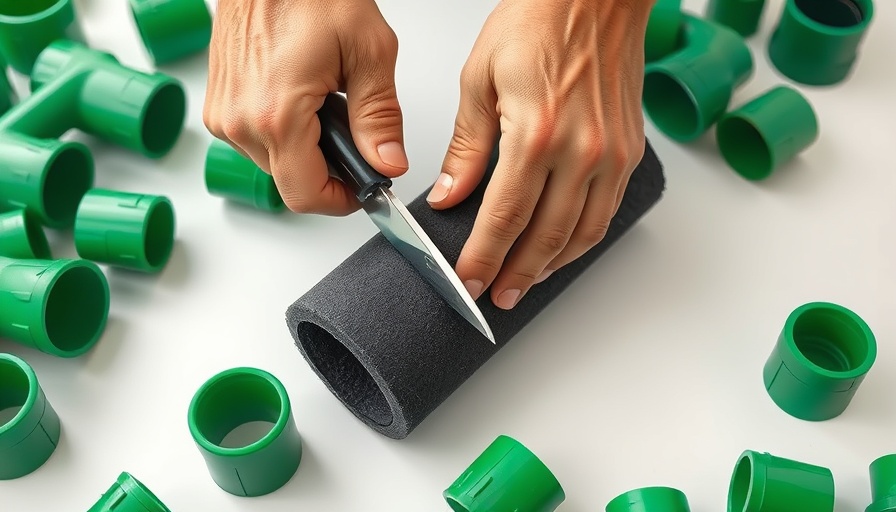
Transforming Your Home with Proper Pipe Insulation
Every homeowner knows the importance of maintaining a comfortable living environment, but did you know that one of the simplest upgrades can significantly enhance your home’s efficiency and longevity? Insulating your water pipes could be the key to preventing future costly repairs and ensuring optimal performance of your plumbing systems. In colder climates, uninsulated pipes are at risk of freezing during winter months, leading to a myriad of expensive damages. In contrast, in warmer areas, condensation can cause mold growth and structural damage. This article explores the precise methods for pipe insulation, revealing best practices, materials, and the benefits of a well-insulated plumbing system.
Understanding the Essentials: Why Pipe Insulation Matters
Pipe insulation serves as a critical barrier against temperature fluctuations and moisture damage. Without insulation, water lines are susceptible to freezing in harsh conditions, which can lead to burst pipes and extensive damage to your home. Moreover, energy efficiency is a significant factor; uninsulated hot water pipes lose heat, causing your water heater to work harder, resulting in higher utility bills. Insulating your pipes allows them to maintain desired temperatures longer, thereby reducing energy costs and promoting sustainability.
Choosing the Right Insulation Material
When selecting pipe insulation, consider the specific needs of your plumbing system. Materials like flexible elastomeric foam are ideal for both hot and cold pipes due to their moisture resistance and flexibility. Polyethylene foam offers a lightweight, cost-effective option for residential applications, while fiberglass insulation suits high-temperature lines in commercial settings. Each type provides different benefits and can be customized to fit the unique conditions of your home.
Best Practices for Installation: Dos and Don'ts
Installing pipe insulation is more than just wrapping materials around your pipes. To maximize efficiency, follow these essential tips:
- Assess First: Begin by inspecting existing pipes for damage and undertaking accurate measurements to ensure precise insulation fitting.
- Mind the Gaps: Ensure insulation covers the entire length of the pipes. Any gaps can lead to heat loss or condensation and compromise efficiency.
- Layer Up: When using tape or wraps, overlapping layers is vital to maintain a complete barrier.
- Secure Properly: Use clamps or adhesives to fasten insulation firmly; a snug fit is essential to ensure long-lasting performance.
By adhering to these best practices, you’ll enjoy enhanced energy efficiency and extended lifespan of your plumbing installations.
The Bigger Picture: Cost Savings and Environmental Benefits
Investing in pipe insulation is not merely about immediate temperature control; it’s a long-term strategy that delivers financial savings and environmental benefits. Insulating your plumbing can lower your utility bills significantly and reduce the workload on your heating systems. Additionally, good insulation can prolong the life of your pipes, resulting in fewer replacements and lower overall maintenance costs. With considerable expenses tied to water damage and energy consumption, proper insulation proves to be an invaluable home improvement project.
Future Trends in Insulation Technology
As technology continues to evolve, we are witnessing some exciting advancements in insulation materials and techniques. New eco-friendly options are becoming increasingly available, allowing homeowners to protect their plumbing systems while significantly reducing their environmental footprint. Additionally, smart home solutions are integrating with plumbing systems to monitor temperature and moisture levels, providing homeowners with real-time data that can prevent troublesome issues before they arise. Keeping abreast of these trends can guide you in making informed decisions about insulation investments for your home.
Closing Thoughts: Your Next Steps
Now that you have a comprehensive understanding of the importance and methods of pipe insulation, it’s time to take action. Assess your home’s plumbing system today, choose the right materials, and implement the best practices highlighted in this article. By doing so, not only will you enhance the efficiency of your home, but you will also prevent potential damage, ensuring your plumbing system remains reliable for years to come.
For further guidance and expert advice on the best insulation solutions for your home, consider consulting a professional. Their insights can help you choose the most effective approach tailored specifically to your needs.
 Add Row
Add Row  Add
Add 


Write A Comment